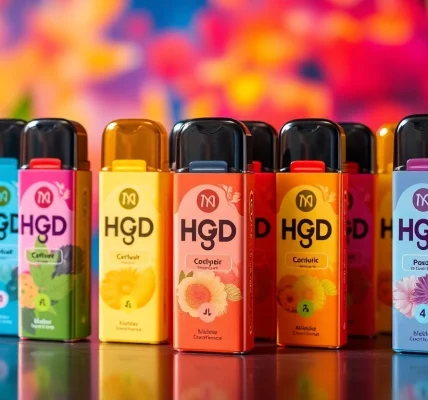Understanding the Basics of Fly Fishing Bags
When it comes to fly fishing, having the right gear can significantly enhance your experience on the water. One critical piece of equipment that often gets overlooked is the Fly fishing bag. This article delves into the importance of a dedicated bag tailored for fly fishing enthusiasts, exploring its various types, essential features, and materials commonly used in their construction.
Types of Fly Fishing Bags
Fly fishing bags come in several forms, each designed with specific features that cater to different fishing styles and preferences. Below, we outline the primary types of fly fishing bags:
- Chest Packs: These are worn on the front and are ideal for keeping essential gear close at hand. They offer mobility and easy access to tools like tippets and flies without needing to dig through a larger bag.
- Sling Packs: A sling pack can be worn over one shoulder, making it easy to rotate around for quick access. This type is great for anglers who need to move and shift positions frequently.
- Hip Packs: Ideal for minimalist anglers, these bags provide a streamlined approach to carrying gear. They are typically worn around the waist, keeping the angler light on their feet while still maintaining capability.
- Backpacks: For those planning to spend extended hours on the water or tackle more remote fishing areas, backpacks offer ample storage capacity. They can carry everything from extra clothing to a lunchbox.
- Utility Bags: These multipurpose bags can hold a wide variety of gear and essentials, making them a great choice for those who fish in varied conditions.
Key Features to Look For
When selecting a fly fishing bag, certain features can enhance functionality and ease of use:
- Storage Compartments: Look for bags with multiple organizational pockets to keep gear sorted and easily accessible.
- External Attachment Points: These are useful for securing tools or quick-reach items, such as pliers or retractors.
- Padded Straps: Comfort is paramount, especially during long fishing trips. Padded straps can prevent shoulder fatigue.
- Quick-release Mechanisms: Fast access to gear when you’re one-handed can make all the difference in a fishing situation.
Common Materials Used in Fly Fishing Bags
The durability and functionality of a fly fishing bag heavily depend on the materials used in its construction:
- Nylon: Lightweight and durable, nylon bags are commonly waterproof or water-resistant, making them ideal for wet conditions.
- Canvas: While typically heavier than nylon, canvas provides ruggedness and a classic look. Waxed canvas can enhance water resistance.
- RIPSTOP Fabric: This is designed to prevent tears, ensuring that your bag can withstand rough handling while fishing.
- Reinforced Stitching: This feature ensures the longevity of seams, particularly on high-stress areas like zippers and pockets.
Benefits of Using a Dedicated Fly Fishing Bag
Investing in a dedicated fly fishing bag provides several advantages for the angler seeking an optimal experience:
Organizational Advantages
A dedicated fly fishing bag is designed with specific compartments and features that enhance organizational capabilities, ensuring that every tool and piece of equipment has its place. This not only saves time but also prevents frustration on the water, allowing you to focus on fishing rather than rummaging through a disorganized bag.
Durability and Protection
Given the rigors of outdoor activities, fly fishing bags are typically constructed to resist wear and tear. They often feature weather-resistant materials that keep your gear dry and protected from the elements, ensuring that everything from your flies to your fishing license stays safe.
Comfort and Convenience
With thoughtful design features such as padded straps and ergonomic layouts, a fly fishing bag can significantly enhance comfort during long outings. This comfort element encourages anglers to spend more productive hours on the stream.
How to Choose the Right Fly Fishing Bag for Your Needs
Selecting the right fly fishing bag is critical to enhancing your fishing experience. Here are several factors to consider:
Assessing Your Fishing Style
Your personal fishing style largely dictates which bag is best for you. If you prefer to keep your gear minimal, a hip pack or chest pack may be the best fit. Alternatively, if you enjoy longer excursions into remote areas, a backpack may serve you better.
Size and Capacity Considerations
Consider how much gear you plan to carry. A compact bag may suffice for day trips, whereas longer trips may require a more spacious option. Assess your needs against potential scenarios to ensure you choose a bag with adequate capacity.
Budgeting for Quality
Quality is key when it comes to durable fly fishing bags. While it can be tempting to opt for a budget-friendly option, a small investment can pay off in durability and functionality. Take the time to compare options while considering how much you are willing to spend for longevity and quality.
Top Features that Enhance Fly Fishing Bag Performance
To ensure your fly fishing bag performs optimally, look for the following features:
Waterproofing and Weather Resistance
Choosing a fly fishing bag with waterproofing or weather-resistant properties is essential for keeping our gear dry, especially during unexpected rain or spills. Opt for bags with sealed zippers and durable water-resistant materials for enhanced protection.
Ergonomic Designs for Comfort
An ergonomic design ensures that the bag conforms to your body while distributing weight evenly. Look for padded sections, contoured shapes, and adjustable straps to minimize discomfort during prolonged wear.
Adjustable Straps and Accessibility
Adjustable straps help ensure a custom fit, imperative for active anglers who frequently reposition their bag. Consider designs that promote quick access to gear – whether that’s side pockets or quick-draw features for easy equipment deployment.
Maintaining and Caring for Your Fly Fishing Bag
Proper maintenance and care for your fly fishing bag can extend its lifespan significantly. Here are some strategies for keeping your bag in great condition:
Cleaning Techniques for Longevity
Regular cleaning is essential to remove dirt, grime, and residues that can degrade materials. Most bags can be cleaned with warm, soapy water and a soft brush. Follow the manufacturer’s instructions for specific cleaning recommendations.
Storage Tips When Not in Use
To avoid unnecessary wear while your bag is not in use, store it in a cool, dry place away from direct sunlight. Ensure it is emptied and dried thoroughly before storage to prevent mildew and unpleasant odors.
Repairing Common Wear and Tear
Even with the utmost care, wear and tear can occur. Learning simple repair techniques, like sewing up basic tears or replacing zipper pulls, can keep your bag functional longer. In cases of severe damage, consider consulting a professional for repairs.




